|
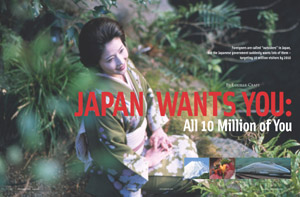 THE FEMALE TOUR GUIDE holding court aboard a recent Hato Bus tour was unusually peppy and glib. Her ebullient gift for nonstop chitchat occasionally made one yearn for an automatic "idling stop" function on the banter instead of on the gas pedal. But as the coach plied the well-worn tourist route from Tokyo Tower to the Imperial Palace to the Asakusa Senso-ji Temple, there was no disguising the fact that this was not business as usual. In fact, 2003 will go down as one of the worst years since Hato Bus, sporting its trademark pigeon logo, began offering tours to international visitors in 1951. The bus felt cavernous and depressing, its light payload of passengers illustrating all too perfectly the funk the Japanese tourism industry is struggling to emerge from this year. THE FEMALE TOUR GUIDE holding court aboard a recent Hato Bus tour was unusually peppy and glib. Her ebullient gift for nonstop chitchat occasionally made one yearn for an automatic "idling stop" function on the banter instead of on the gas pedal. But as the coach plied the well-worn tourist route from Tokyo Tower to the Imperial Palace to the Asakusa Senso-ji Temple, there was no disguising the fact that this was not business as usual. In fact, 2003 will go down as one of the worst years since Hato Bus, sporting its trademark pigeon logo, began offering tours to international visitors in 1951. The bus felt cavernous and depressing, its light payload of passengers illustrating all too perfectly the funk the Japanese tourism industry is struggling to emerge from this year.
Tourism has been the perennial stepchild of the Japanese business world, never considered in the same league as banking or manufacturing or other sectors of the economy. "Tourism has tended to be viewed as simply a matter of sightseeing," Keidanren said in its position paper on tourism in the 21st century. "For this reason, tourism has received markedly less priority compared to other areas of industrial activity in terms of improving the industry environment."
The desperation in which Japan's
mandarins find themselves has them
turning to the unglamorous tourism
industry to revive the economy
Perhaps it is a measure of the depths of desperation into which Japan's mandarins find themselves that they are turning to the unglamorous tourism industry for help in reviving the long-stagnant economy. Earlier this year, Prime Minister Junichiro Koizumi announced a "Visit Japan" campaign, and for the first time in modern Japanese history the government will focus on attracting foreign tourists. Koizumi has exhorted the bureaucracy to double inbound visitors to 10 million by 2010. The tourism budget will be expanded from $25 million to $42 million. If Keidanren's math turns out right, the tourism boost will yield JPY48 trillion in direct and indirect revenues and create about 4.1 million jobs.
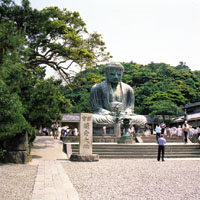 Critics have already written off the tourism campaign as half-baked. For one thing, unlike many other countries, Japan refuses to bite the bullet and set up an independent commission or ministry dedicated to marketing Japan's tourist assets abroad. Instead, responsibility for tourism lies with a few dozen staff in the tourism department of the Ministry of Land, Infrastructure and Transport -- and no less than 10 other ministries and agencies, a sure-fire recipe for delay and inefficiency. And Japan's tourism budget, even in its new and expanded version, is still stingy by international standards. Australia, for instance, with a GDP one-seventh that of Japan's, will spend nearly twice as much on tourism this year: $90 million. Critics have already written off the tourism campaign as half-baked. For one thing, unlike many other countries, Japan refuses to bite the bullet and set up an independent commission or ministry dedicated to marketing Japan's tourist assets abroad. Instead, responsibility for tourism lies with a few dozen staff in the tourism department of the Ministry of Land, Infrastructure and Transport -- and no less than 10 other ministries and agencies, a sure-fire recipe for delay and inefficiency. And Japan's tourism budget, even in its new and expanded version, is still stingy by international standards. Australia, for instance, with a GDP one-seventh that of Japan's, will spend nearly twice as much on tourism this year: $90 million.
Still, the agents of Japan's long-neglected travel industry aren't complaining, ecstatic as they are at the prospect of finally getting some respect. "No prime minister has ever been interested in tourism. Koizumi is the first [to even pay attention]," says Goto.
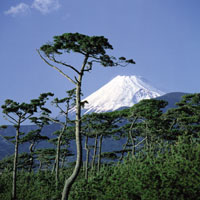 The Visit Japan campaigners have their work cut out for them. According to the World Tourism Organization, Japan in 2001 ranked 33rd in terms of international visitors, with fewer visitors than even Ukraine or the Czech Republic. The figures for annual expenditures by foreign visitors were equally bleak. At about $3 billion a year, Japan found itself in the same company as Puerto Rico, the Dominican Republic and Morocco. Topping the list are the US ($72 billion), Spain ($33 billion) and France ($30 billion). The figures lump pleasure travelers together with business travelers; a full two-thirds of Japan's inbound visitors are here on business-related trips. The Visit Japan campaigners have their work cut out for them. According to the World Tourism Organization, Japan in 2001 ranked 33rd in terms of international visitors, with fewer visitors than even Ukraine or the Czech Republic. The figures for annual expenditures by foreign visitors were equally bleak. At about $3 billion a year, Japan found itself in the same company as Puerto Rico, the Dominican Republic and Morocco. Topping the list are the US ($72 billion), Spain ($33 billion) and France ($30 billion). The figures lump pleasure travelers together with business travelers; a full two-thirds of Japan's inbound visitors are here on business-related trips.
Figures released by the semi-governmental Japan National Tourist Organization show inbound travelers for 2002 up by 9.8 percent, to 5,238,672. But as of June this year, year-on-year tourist numbers had fallen 3.1 percent. Measured against the World Tourist Organization's estimated tourist arrivals for the top five most popular destinations -- France, Spain, the US, Italy and China -- which measure their arrivals in the tens of millions (France brings in nearly 77 million tourists a year), Japan's numbers are truly grim.
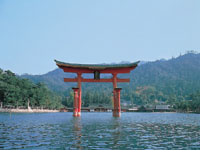 SARS and the Iraq war have decimated tourism across Asia, but the impact has been magnified in Japan, already considered one of the world's least desirable places to take a vacation. Long before the scourge hit Hong Kong, tourists had sidestepped Japan, branded too expensive, too remote and too difficult to navigate, since English is rarely used or understood outside of Tokyo. SARS and the Iraq war have decimated tourism across Asia, but the impact has been magnified in Japan, already considered one of the world's least desirable places to take a vacation. Long before the scourge hit Hong Kong, tourists had sidestepped Japan, branded too expensive, too remote and too difficult to navigate, since English is rarely used or understood outside of Tokyo.
Travel writer Margaret Price was hired to test the English ability of receptionists at provincial hotels, and the results were predictably disastrous. "At major hotels there's no problem. When it got down to the smaller establishments you'd just love people to come to, when I tried to make a booking, there was hesitancy and even unintentional rudeness [on behalf of the clerks]."
That's why, even in good years, only about 5 million travelers visit Japan annually, a paltry number even compared to the average for much smaller or much poorer countries such as Poland or Macau. Although deflation has made travel here much more affordable in recent years, denting basic prices, tourism experts say the word hasn't gotten out to foreign tourists.
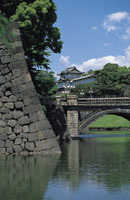 "I think a lot of it is to do with people not knowing how to do things more cheaply," says Price. "Which means there hasn't been enough advertising to show people they can do things as cheaply as they can at home. Even to the extent of eating a steak for dinner every night if you wanted to." Many foreigners seem to still equate Japan with $5 cups of coffee, $100 melons, gold-filigreed ramen and other gustatory excesses of the go-go 80s. But nowadays, deflation has taken such a bite out of restaurant sales, Price notes, that even a full-course meal can be had for JPY900 (about $7.50) or less, sirloin tips included. Other low-frills assets such as the Japan Rail Pass, which offers unlimited travel for a set price, are equally under-publicized abroad. "I think a lot of it is to do with people not knowing how to do things more cheaply," says Price. "Which means there hasn't been enough advertising to show people they can do things as cheaply as they can at home. Even to the extent of eating a steak for dinner every night if you wanted to." Many foreigners seem to still equate Japan with $5 cups of coffee, $100 melons, gold-filigreed ramen and other gustatory excesses of the go-go 80s. But nowadays, deflation has taken such a bite out of restaurant sales, Price notes, that even a full-course meal can be had for JPY900 (about $7.50) or less, sirloin tips included. Other low-frills assets such as the Japan Rail Pass, which offers unlimited travel for a set price, are equally under-publicized abroad.
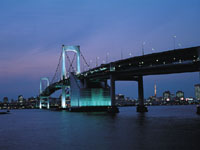 Showing international visitors the sights is very much a sideline for Hato Bus, which sells about 70,000 tours a year to foreigners and 600,000 to domestic tourists. (The agency's staggering array of package deals includes a trip to the Okura Hotel to have one's photo taken in a borrowed wedding dress; entertainment packages ranging from comedians to geisha to male and female strippers and cross-dressing dancers; in a strange twist, the agency even markets its bus trips for foreign tourists to Japanese who want to practice their English. In other words, tourism in Japan is based purely on being around tourists -- and not on reaching out to encourage visitors from abroad.) Showing international visitors the sights is very much a sideline for Hato Bus, which sells about 70,000 tours a year to foreigners and 600,000 to domestic tourists. (The agency's staggering array of package deals includes a trip to the Okura Hotel to have one's photo taken in a borrowed wedding dress; entertainment packages ranging from comedians to geisha to male and female strippers and cross-dressing dancers; in a strange twist, the agency even markets its bus trips for foreign tourists to Japanese who want to practice their English. In other words, tourism in Japan is based purely on being around tourists -- and not on reaching out to encourage visitors from abroad.)
Goto recalls better times, before the 1985 Plaza Accord halved the value of the dollar against the yen. "Foreigners used to spend a week here on average," says Goto. "Now, it's usually just three days in Japan and then off to Korea or Bangkok." Part of the problem, Goto complains, is that Japan has too many first-class hotels and not enough accommodations for budget travelers.
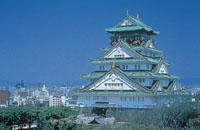 Until recently, in fact, Japan officially was more concerned about sending Japanese tourists offshore than luring foreigners to vacation here, in a bid to hold down the then-politically sensitive trade surplus. "That was almost like another period of isolation for Japan," Price says, referring to the Tokugawa era of seclusion (1600-1868), when Japanese shoguns literally pulled up the drawbridges and refused any contact with the outside world. Similarly, in the 80s and 90s, says Price, foreign tourists "stopped coming, no advertising was done, and the government just didn't care." Until recently, in fact, Japan officially was more concerned about sending Japanese tourists offshore than luring foreigners to vacation here, in a bid to hold down the then-politically sensitive trade surplus. "That was almost like another period of isolation for Japan," Price says, referring to the Tokugawa era of seclusion (1600-1868), when Japanese shoguns literally pulled up the drawbridges and refused any contact with the outside world. Similarly, in the 80s and 90s, says Price, foreign tourists "stopped coming, no advertising was done, and the government just didn't care."
Tourism for the Japanese in Japan
is based purely on being around
tourists -- and not on reaching out to
encourage visitors from abroad
To be sure, Japan's isolated location way out in the North Pacific is a major drawback for travelers. Yet Great Britain -- also a geographically handicapped island nation -- manages to capture more than five times as much tourist revenue as Japan. The difference, say industry officials, is that Japan appears to offer little beyond creaky old stereotypes of geisha, Mt. Fuji and cherry blossoms.
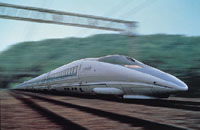 Japan lacks tourist-friendly icons and a distinct identity, says Goto, vice chief of public relations for Hato Bus. "For example, New York -- we easily imagine the Statue of Liberty, the Empire State Building, the United Nations. When we think Paris, we can remember the Eiffel Tower. If we say Tokyo, there's nothing specifically to mention or to think about." Japan lacks tourist-friendly icons and a distinct identity, says Goto, vice chief of public relations for Hato Bus. "For example, New York -- we easily imagine the Statue of Liberty, the Empire State Building, the United Nations. When we think Paris, we can remember the Eiffel Tower. If we say Tokyo, there's nothing specifically to mention or to think about."
Wealthy Americans and Europeans have been targeted by Japanese tourism campaigns in the past, and the government still views Americans as its prime targets. "We have to communicate to American customers that we have many destinations, icons of Japanese cultural heritage like hot springs, or natural beauty or cultural traditions like festivals or dances," says Kanazawa. Advertising will highlight the fact that "although Japan as a nation is a very small island country, our islands cover a vast [geographical] area, so we have many attractions for various customers," he says.
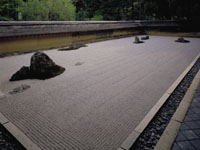 JNTO's upgraded Web site, sporting links like "coolest hotspots" and "smart picks," reflects this new emphasis on nature and culture. On offer recently, for instance, is information about hiking in Hokkaido's Shikotsu-Toya National Park, thumbnail briefs of three photogenic folk festivals and a smattering of the modern pop culture Japan has become famous for, such as Hello Kitty shops and a museum dedicated to the works of Hayao Miyazaki, creator of the Emmy-winning animation film, Spirited Away. JNTO's upgraded Web site, sporting links like "coolest hotspots" and "smart picks," reflects this new emphasis on nature and culture. On offer recently, for instance, is information about hiking in Hokkaido's Shikotsu-Toya National Park, thumbnail briefs of three photogenic folk festivals and a smattering of the modern pop culture Japan has become famous for, such as Hello Kitty shops and a museum dedicated to the works of Hayao Miyazaki, creator of the Emmy-winning animation film, Spirited Away.
Painfully aware of Japan's price disadvantage vis-a-vis competing destinations like China, the government says that it has been trying to squeeze better prices out of service providers here. "We can't directly subsidize foreign tourists," says Kanazawa, "so we've asked private sector companies to give good discounts to foreign visitors." A "cost-cutter" seven-day package tour of Tokyo from the US west coast was on offer for $999, close to comparable all-included tours for China.
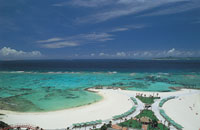 But for Asian travelers, the message has to be calibrated differently. Asians account for the bulk of visitors to Japan, and they don't need to leave home to look at quaint temples, pottery or brushstroke paintings. This year marks the first time Japan is expanding its campaign beyond Westerners to include its regional neighbors. While the SARS scare has slashed travel both outside and within the region, the government is proceeding with an unprecedented ad campaign, slated for launch this year, fine-tuned to appeal to both exotica-seeking Americans and those Asians hankering for a more Western-oriented vacation -- without having to leave the East. But for Asian travelers, the message has to be calibrated differently. Asians account for the bulk of visitors to Japan, and they don't need to leave home to look at quaint temples, pottery or brushstroke paintings. This year marks the first time Japan is expanding its campaign beyond Westerners to include its regional neighbors. While the SARS scare has slashed travel both outside and within the region, the government is proceeding with an unprecedented ad campaign, slated for launch this year, fine-tuned to appeal to both exotica-seeking Americans and those Asians hankering for a more Western-oriented vacation -- without having to leave the East.
JNTO notes that while 42,567 Americans visited Japan in February, a 9 percent decline year-on-year, 112,988 Koreans (+13.5 percent), 66,734 Taiwanese (-14 percent), 41,864 Chinese (+25.3 percent) and 25,924 (-36.5 percent) visitors from Hong Kong entered the country.
"For Chinese travelers wanting to go abroad, Japan is the nearest developed market," says Satoru Kanazawa, director general in the tourism department of the Ministry of Land, Infrastructure and Transport. "We still have lots of Western-style attractions. Not only Tokyo Disneyland, but hot springs, ski resorts and beach resorts."
The Visit Japan campaign hasn't exactly kicked off with a bang. When J@pan Inc suggests that the campaign's Jap-lish slogan, Yokoso! Japan (Welcome! Japan) -- chosen because it is "simple, easy to remember and conveys a Japanese sensibility" -- may be pleasing to Japanese ears but is utterly meaningless to foreign visitors (toward whom it is ostensibly aimed), Kanazawa grows testy.
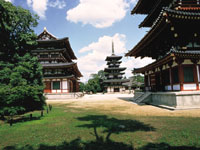 "Years ago, nobody understood what 'Aloha' meant either," he replies, insisting 'Yokoso' will one day be as much a part of the English lexicon as Hawaii's famous all-purpose greeting. Perhaps, but who has time to wait that long? Japan excels at exporting SUVs, flat-screen TVs and video games, but has always fumbled when it comes to selling itself. By international standards Japan's tourism budget is skimpy and not a little bit sad. But still, after years of neglect, tourism is now nearing the heart of the Japanese economy. With so many riches and so much to offer, Japan is finally sensing the need to get the word out. Its new focus on tourism is long overdue. @
-- Photographs courtesy Japan National Tourist Organization "Years ago, nobody understood what 'Aloha' meant either," he replies, insisting 'Yokoso' will one day be as much a part of the English lexicon as Hawaii's famous all-purpose greeting. Perhaps, but who has time to wait that long? Japan excels at exporting SUVs, flat-screen TVs and video games, but has always fumbled when it comes to selling itself. By international standards Japan's tourism budget is skimpy and not a little bit sad. But still, after years of neglect, tourism is now nearing the heart of the Japanese economy. With so many riches and so much to offer, Japan is finally sensing the need to get the word out. Its new focus on tourism is long overdue. @
-- Photographs courtesy Japan National Tourist Organization
|


 THE FEMALE TOUR GUIDE holding court aboard a recent Hato Bus tour was unusually peppy and glib. Her ebullient gift for nonstop chitchat occasionally made one yearn for an automatic "idling stop" function on the banter instead of on the gas pedal. But as the coach plied the well-worn tourist route from Tokyo Tower to the Imperial Palace to the Asakusa Senso-ji Temple, there was no disguising the fact that this was not business as usual. In fact, 2003 will go down as one of the worst years since Hato Bus, sporting its trademark pigeon logo, began offering tours to international visitors in 1951. The bus felt cavernous and depressing, its light payload of passengers illustrating all too perfectly the funk the Japanese tourism industry is struggling to emerge from this year.
THE FEMALE TOUR GUIDE holding court aboard a recent Hato Bus tour was unusually peppy and glib. Her ebullient gift for nonstop chitchat occasionally made one yearn for an automatic "idling stop" function on the banter instead of on the gas pedal. But as the coach plied the well-worn tourist route from Tokyo Tower to the Imperial Palace to the Asakusa Senso-ji Temple, there was no disguising the fact that this was not business as usual. In fact, 2003 will go down as one of the worst years since Hato Bus, sporting its trademark pigeon logo, began offering tours to international visitors in 1951. The bus felt cavernous and depressing, its light payload of passengers illustrating all too perfectly the funk the Japanese tourism industry is struggling to emerge from this year.
 Critics have already written off the tourism campaign as half-baked. For one thing, unlike many other countries, Japan refuses to bite the bullet and set up an independent commission or ministry dedicated to marketing Japan's tourist assets abroad. Instead, responsibility for tourism lies with a few dozen staff in the tourism department of the Ministry of Land, Infrastructure and Transport -- and no less than 10 other ministries and agencies, a sure-fire recipe for delay and inefficiency. And Japan's tourism budget, even in its new and expanded version, is still stingy by international standards. Australia, for instance, with a GDP one-seventh that of Japan's, will spend nearly twice as much on tourism this year: $90 million.
Critics have already written off the tourism campaign as half-baked. For one thing, unlike many other countries, Japan refuses to bite the bullet and set up an independent commission or ministry dedicated to marketing Japan's tourist assets abroad. Instead, responsibility for tourism lies with a few dozen staff in the tourism department of the Ministry of Land, Infrastructure and Transport -- and no less than 10 other ministries and agencies, a sure-fire recipe for delay and inefficiency. And Japan's tourism budget, even in its new and expanded version, is still stingy by international standards. Australia, for instance, with a GDP one-seventh that of Japan's, will spend nearly twice as much on tourism this year: $90 million.
 The Visit Japan campaigners have their work cut out for them. According to the World Tourism Organization, Japan in 2001 ranked 33rd in terms of international visitors, with fewer visitors than even Ukraine or the Czech Republic. The figures for annual expenditures by foreign visitors were equally bleak. At about $3 billion a year, Japan found itself in the same company as Puerto Rico, the Dominican Republic and Morocco. Topping the list are the US ($72 billion), Spain ($33 billion) and France ($30 billion). The figures lump pleasure travelers together with business travelers; a full two-thirds of Japan's inbound visitors are here on business-related trips.
The Visit Japan campaigners have their work cut out for them. According to the World Tourism Organization, Japan in 2001 ranked 33rd in terms of international visitors, with fewer visitors than even Ukraine or the Czech Republic. The figures for annual expenditures by foreign visitors were equally bleak. At about $3 billion a year, Japan found itself in the same company as Puerto Rico, the Dominican Republic and Morocco. Topping the list are the US ($72 billion), Spain ($33 billion) and France ($30 billion). The figures lump pleasure travelers together with business travelers; a full two-thirds of Japan's inbound visitors are here on business-related trips.
 SARS and the Iraq war have decimated tourism across Asia, but the impact has been magnified in Japan, already considered one of the world's least desirable places to take a vacation. Long before the scourge hit Hong Kong, tourists had sidestepped Japan, branded too expensive, too remote and too difficult to navigate, since English is rarely used or understood outside of Tokyo.
SARS and the Iraq war have decimated tourism across Asia, but the impact has been magnified in Japan, already considered one of the world's least desirable places to take a vacation. Long before the scourge hit Hong Kong, tourists had sidestepped Japan, branded too expensive, too remote and too difficult to navigate, since English is rarely used or understood outside of Tokyo.
 "I think a lot of it is to do with people not knowing how to do things more cheaply," says Price. "Which means there hasn't been enough advertising to show people they can do things as cheaply as they can at home. Even to the extent of eating a steak for dinner every night if you wanted to." Many foreigners seem to still equate Japan with $5 cups of coffee, $100 melons, gold-filigreed ramen and other gustatory excesses of the go-go 80s. But nowadays, deflation has taken such a bite out of restaurant sales, Price notes, that even a full-course meal can be had for JPY900 (about $7.50) or less, sirloin tips included. Other low-frills assets such as the Japan Rail Pass, which offers unlimited travel for a set price, are equally under-publicized abroad.
"I think a lot of it is to do with people not knowing how to do things more cheaply," says Price. "Which means there hasn't been enough advertising to show people they can do things as cheaply as they can at home. Even to the extent of eating a steak for dinner every night if you wanted to." Many foreigners seem to still equate Japan with $5 cups of coffee, $100 melons, gold-filigreed ramen and other gustatory excesses of the go-go 80s. But nowadays, deflation has taken such a bite out of restaurant sales, Price notes, that even a full-course meal can be had for JPY900 (about $7.50) or less, sirloin tips included. Other low-frills assets such as the Japan Rail Pass, which offers unlimited travel for a set price, are equally under-publicized abroad.
 Showing international visitors the sights is very much a sideline for Hato Bus, which sells about 70,000 tours a year to foreigners and 600,000 to domestic tourists. (The agency's staggering array of package deals includes a trip to the Okura Hotel to have one's photo taken in a borrowed wedding dress; entertainment packages ranging from comedians to geisha to male and female strippers and cross-dressing dancers; in a strange twist, the agency even markets its bus trips for foreign tourists to Japanese who want to practice their English. In other words, tourism in Japan is based purely on being around tourists -- and not on reaching out to encourage visitors from abroad.)
Showing international visitors the sights is very much a sideline for Hato Bus, which sells about 70,000 tours a year to foreigners and 600,000 to domestic tourists. (The agency's staggering array of package deals includes a trip to the Okura Hotel to have one's photo taken in a borrowed wedding dress; entertainment packages ranging from comedians to geisha to male and female strippers and cross-dressing dancers; in a strange twist, the agency even markets its bus trips for foreign tourists to Japanese who want to practice their English. In other words, tourism in Japan is based purely on being around tourists -- and not on reaching out to encourage visitors from abroad.)
 Until recently, in fact, Japan officially was more concerned about sending Japanese tourists offshore than luring foreigners to vacation here, in a bid to hold down the then-politically sensitive trade surplus. "That was almost like another period of isolation for Japan," Price says, referring to the Tokugawa era of seclusion (1600-1868), when Japanese shoguns literally pulled up the drawbridges and refused any contact with the outside world. Similarly, in the 80s and 90s, says Price, foreign tourists "stopped coming, no advertising was done, and the government just didn't care."
Until recently, in fact, Japan officially was more concerned about sending Japanese tourists offshore than luring foreigners to vacation here, in a bid to hold down the then-politically sensitive trade surplus. "That was almost like another period of isolation for Japan," Price says, referring to the Tokugawa era of seclusion (1600-1868), when Japanese shoguns literally pulled up the drawbridges and refused any contact with the outside world. Similarly, in the 80s and 90s, says Price, foreign tourists "stopped coming, no advertising was done, and the government just didn't care."
 Japan lacks tourist-friendly icons and a distinct identity, says Goto, vice chief of public relations for Hato Bus. "For example, New York -- we easily imagine the Statue of Liberty, the Empire State Building, the United Nations. When we think Paris, we can remember the Eiffel Tower. If we say Tokyo, there's nothing specifically to mention or to think about."
Japan lacks tourist-friendly icons and a distinct identity, says Goto, vice chief of public relations for Hato Bus. "For example, New York -- we easily imagine the Statue of Liberty, the Empire State Building, the United Nations. When we think Paris, we can remember the Eiffel Tower. If we say Tokyo, there's nothing specifically to mention or to think about."
 JNTO's upgraded Web site, sporting links like "coolest hotspots" and "smart picks," reflects this new emphasis on nature and culture. On offer recently, for instance, is information about hiking in Hokkaido's Shikotsu-Toya National Park, thumbnail briefs of three photogenic folk festivals and a smattering of the modern pop culture Japan has become famous for, such as Hello Kitty shops and a museum dedicated to the works of Hayao Miyazaki, creator of the Emmy-winning animation film, Spirited Away.
JNTO's upgraded Web site, sporting links like "coolest hotspots" and "smart picks," reflects this new emphasis on nature and culture. On offer recently, for instance, is information about hiking in Hokkaido's Shikotsu-Toya National Park, thumbnail briefs of three photogenic folk festivals and a smattering of the modern pop culture Japan has become famous for, such as Hello Kitty shops and a museum dedicated to the works of Hayao Miyazaki, creator of the Emmy-winning animation film, Spirited Away.
 But for Asian travelers, the message has to be calibrated differently. Asians account for the bulk of visitors to Japan, and they don't need to leave home to look at quaint temples, pottery or brushstroke paintings. This year marks the first time Japan is expanding its campaign beyond Westerners to include its regional neighbors. While the SARS scare has slashed travel both outside and within the region, the government is proceeding with an unprecedented ad campaign, slated for launch this year, fine-tuned to appeal to both exotica-seeking Americans and those Asians hankering for a more Western-oriented vacation -- without having to leave the East.
But for Asian travelers, the message has to be calibrated differently. Asians account for the bulk of visitors to Japan, and they don't need to leave home to look at quaint temples, pottery or brushstroke paintings. This year marks the first time Japan is expanding its campaign beyond Westerners to include its regional neighbors. While the SARS scare has slashed travel both outside and within the region, the government is proceeding with an unprecedented ad campaign, slated for launch this year, fine-tuned to appeal to both exotica-seeking Americans and those Asians hankering for a more Western-oriented vacation -- without having to leave the East.
 "Years ago, nobody understood what 'Aloha' meant either," he replies, insisting 'Yokoso' will one day be as much a part of the English lexicon as Hawaii's famous all-purpose greeting. Perhaps, but who has time to wait that long? Japan excels at exporting SUVs, flat-screen TVs and video games, but has always fumbled when it comes to selling itself. By international standards Japan's tourism budget is skimpy and not a little bit sad. But still, after years of neglect, tourism is now nearing the heart of the Japanese economy. With so many riches and so much to offer, Japan is finally sensing the need to get the word out. Its new focus on tourism is long overdue. @
-- Photographs courtesy Japan National Tourist Organization
"Years ago, nobody understood what 'Aloha' meant either," he replies, insisting 'Yokoso' will one day be as much a part of the English lexicon as Hawaii's famous all-purpose greeting. Perhaps, but who has time to wait that long? Japan excels at exporting SUVs, flat-screen TVs and video games, but has always fumbled when it comes to selling itself. By international standards Japan's tourism budget is skimpy and not a little bit sad. But still, after years of neglect, tourism is now nearing the heart of the Japanese economy. With so many riches and so much to offer, Japan is finally sensing the need to get the word out. Its new focus on tourism is long overdue. @
-- Photographs courtesy Japan National Tourist Organization 


